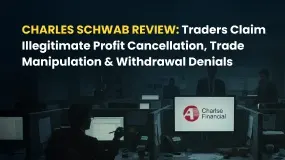简体中文
繁體中文
English
Pусский
日本語
ภาษาไทย
Tiếng Việt
Bahasa Indonesia
Español
हिन्दी
Filippiiniläinen
Français
Deutsch
Português
Türkçe
한국어
العربية
Why you need a Trading plan
Abstract:As a trader one may find it difficult to stick to rules and plans but these are ultimately serious. You can sit across one hundred traders today and they will confirm their ability to trade but they will not be able to strictly define the rules which they use to define a trading opportunity, what defines their loss or profit targets, and how many times a day they actually plan on trading. Today we will be talking about why a trading plan is important and how to set up one.

As a trader one may find it difficult to stick to rules and plans but these are ultimately serious. You can sit across one hundred traders today and they will confirm their ability to trade but they will not be able to strictly define the rules which they use to define a trading opportunity, what defines their loss or profit targets, and how many times a day they actually plan on trading. Today we will be talking about why a trading plan is important and how to set up one
Importance of a trading plan
A trading plan is a set of rules that use to define the market environment in which you will enter a buy or sale position. These rules help you define your edge in the market as well as define how much you are willing to lose so that you drastically increase the chances that you will not blow your account. This plan also defines your daily target so that you do not overtrade and over-risk your account. These trading rules allow you to keep a trading routine that will guarantee that you maximize your edge and minimize risk. The plan also reduces your emotions in trading as by sticking to rules you are able to remove the guesswork out of the picture and grow accustomed to your trading strategy.
Just spending an hour or two setting up your plan and just spending 30 minutes a day going over it before you trade can really hummer in the basics of your trading strategy and the confidence that your account funds will be protected. By shifting over to a trading plan you begin to treat your trading less like a hobby and more like an actual business
You also need to ensure that you keep track of the broker you use and the conditions which they offer when trading. In your trading plan you, want to take note of your daily trades the pips which you lose and gain. This can show you if the broker is skimming off your pips or adjusting the spread to skim more of your money. These are some of the sneaky tricks brokers can use to take a little more than they should and you can track and report them if you find that your spreads and pip values keep changing. Alternatively, you can use WikiFx to find the best regulated and verified brokers who follow strict trading standards. This app also shows you which brokers are known scammers and have bad customer service so you know to stay away from them. You can also report broker misconduct and they can help you recover your stolen funds so next time you are having a problem with a broker try WikiFx
How to set up a trading plan
In a book or document first list the rules of your strategy. Make sure that this is a document you can access every day, preferably when you are trading.
In this document define how much you are willing to risk in a trading day or week. This will give you a well-defined limit as to how much you will lose of your account so that you are able to protect it. You will also define which trading period you will trade during. Eg some may only prefer to trade the New York session because that is the time of the day with the most volume or that is when you are least busy. You have to ensure that you do not become a chart zombie and trade all day. When you do so you increase the number of trades you make a day and risk overtrading.
With each trade you make you look at your trading plan for confirmation and trade accordingly. This will help you follow a trading routine and keep your trading consistent.

Disclaimer:
The views in this article only represent the author's personal views, and do not constitute investment advice on this platform. This platform does not guarantee the accuracy, completeness and timeliness of the information in the article, and will not be liable for any loss caused by the use of or reliance on the information in the article.
Read more

WikiEXPO Dubai 2025 “Welcome Party” Kicks Off Tonight!
In anticipation of the upcoming WikiEXPO Dubai 2025, the WikiEXPO Organizing Committee has specially arranged a high-end social gathering—the “Welcome Party”. The event will be grandly held on the evening of Monday, Nov 10, on the 6th Floor, Conrad Dubai, UAE.

Charles Schwab Review: Traders Claim Illegitimate Profit Cancellation, Trade Manipulation & More
Have you been lured into the Charles Schwab app for trading on the back of outrageous profit claims by the broker? Did you fail to receive any of these? Does the broker deny withdrawals every time you request and cancel your forex trading account? Have you been victimized financially by its trade manipulation? Act before you are left with a NIL balance in your account. Many traders have questioned Charles Schwab customer service and many other operational executives for the aforementioned illegitimate trading activities. In this Charles Schwab review article, we have shared some of their comments. Read on!

AMP Futures Exposed: Traders Raise Alarms Over Illegitimate Account Blocks & Bad Customer Service
Has AMP Futures blocked your forex trading account? Does it fail to provide any explanation for this act? Do you face issues concerning deposits to your AMP Futures account? Is the customer service non-existent for any trading query you raise with it? You are not alone! Many traders have been facing these issues upon AMP Futures login. Some of them have commented on AMP Futures review platforms. In this article, we have shared some reviews that you can look at. Read on!

FXGlory Review: Vanishing Profits, Capital Scams & Withdrawal Charges Keep Annoying Traders
Does FXGlory remove all your forex trading account balances upon fund withdrawal requests? Or do you witness incorrect trading account balances after fund withdrawals? Does the Saint Lucia-based forex broker charge you for fund withdrawals? All these and many more scam-related complaints have been filed against the forex broker. In this FXGlory review article, we will discuss several complaints. Read on!
WikiFX Broker
Latest News
BASF CEO: EU CO₂ Trading Is A "Destruction Mechanism" For European Industry
WikiEXPO Dubai 2025 “Welcome Party” Kicks Off Tonight!
He Trusted a WhatsApp Group and Lost RM659,000
Capital.com Review 2025: Is It a Scam? Official License Verification and Real User Ratings
BACXN Exchange Exposed: AI-Investment Scam Drains RM1.2 Million
From Zero Spread to Zero Balance: How Unlicensed Platforms Drain Investors Step by Step
Currency Calculator




